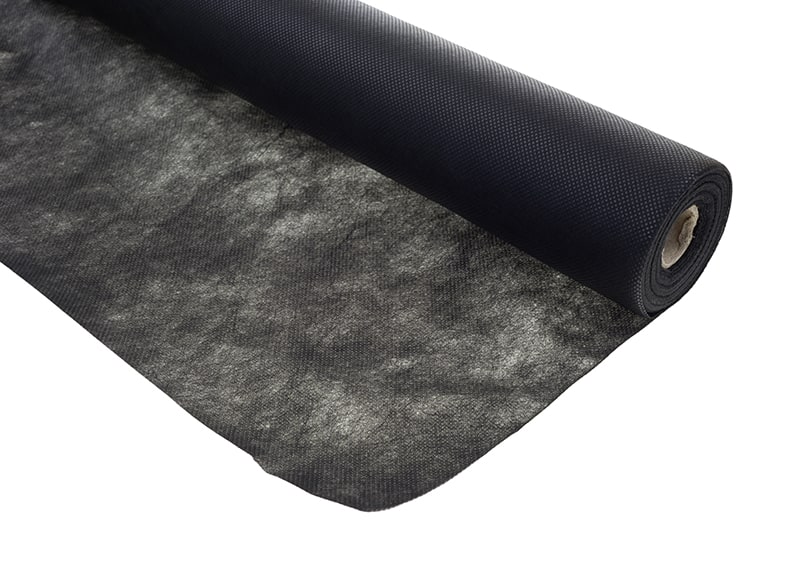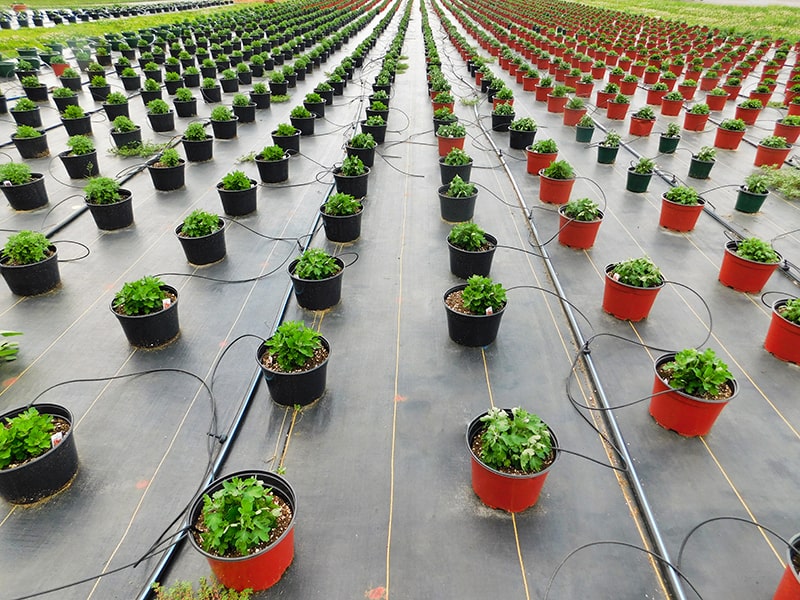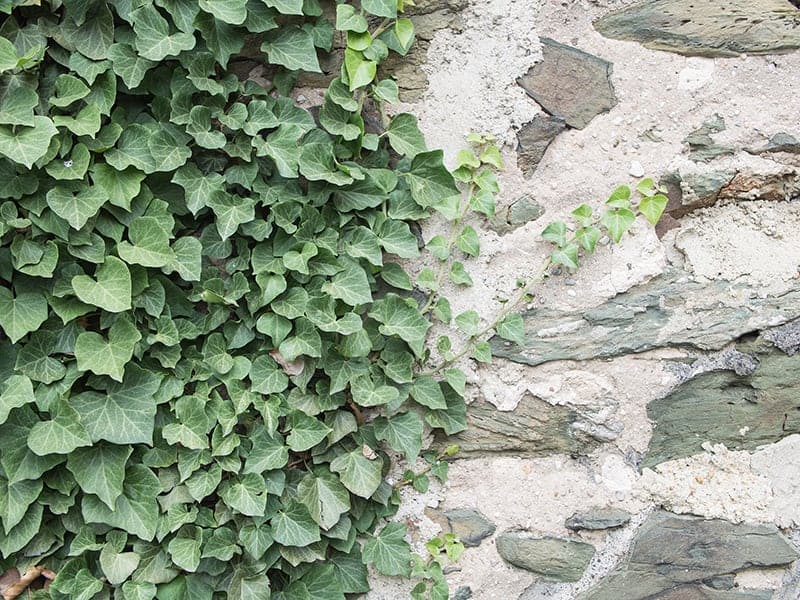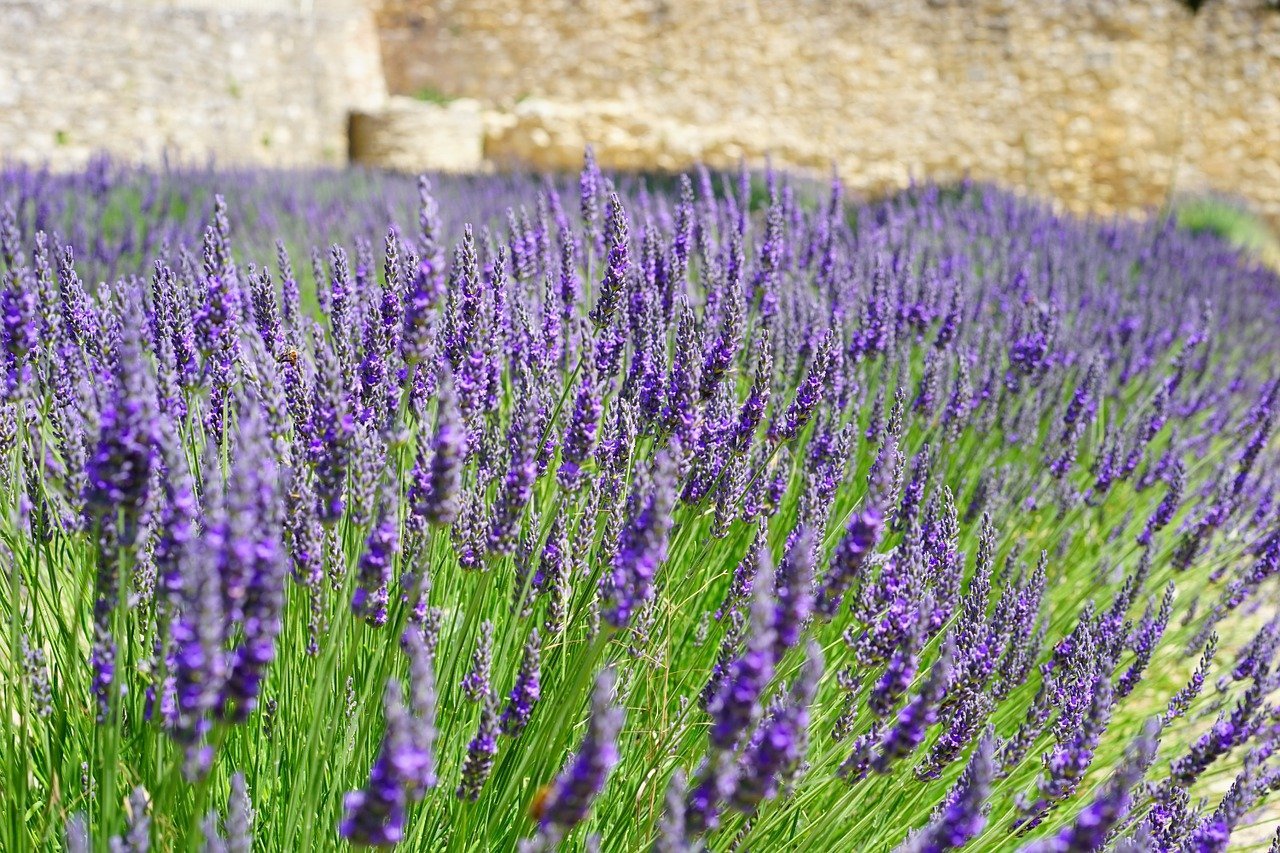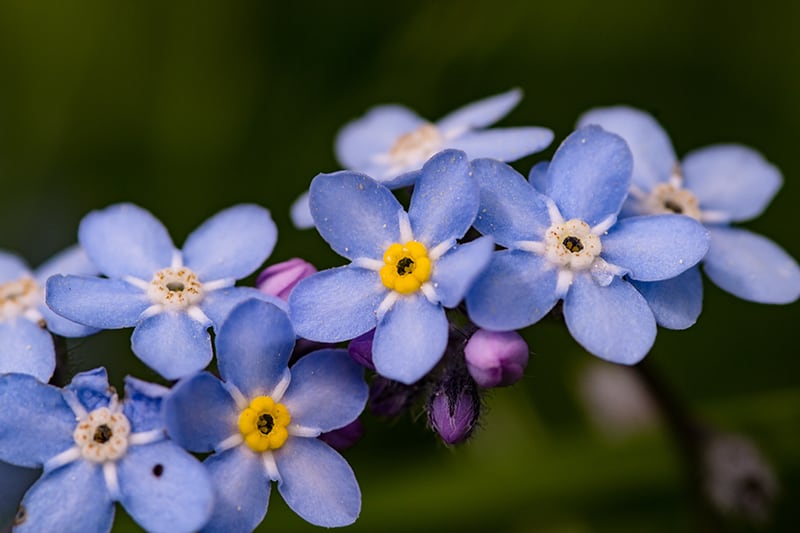The growing medium meets soil additive, coconut coir (or coco coir for sho... Read More
- Home >
- Landscape Fabric in the Garden – What it is, Pros, Cons, and How to Use
Landscape Fabric in the Garden – What it is, Pros, Cons, and How to Use
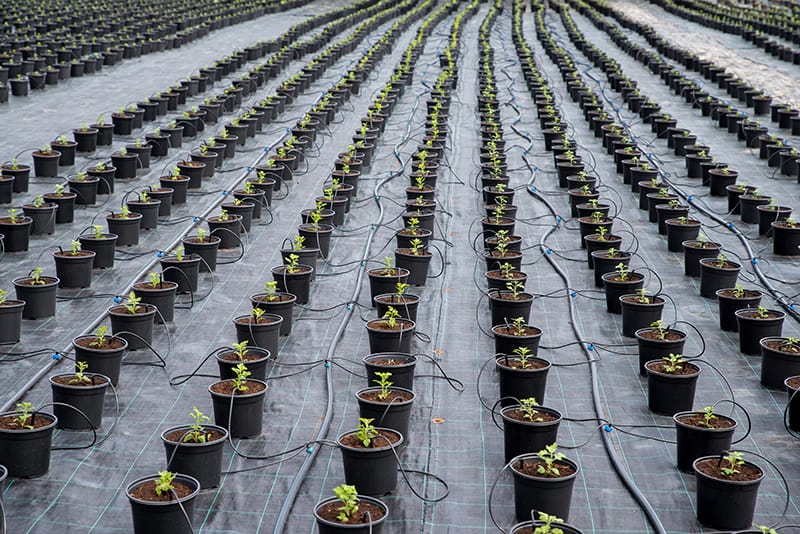
If you’re looking for a way to prevent weeds from spoiling the look of your garden without using harsh chemicals, then landscape fabric could be the solution. Here we find out all about landscape fabric and how to use it effectively.
What is Landscape Fabric?
Landscape fabric is a type of material that is used primarily to discourage weeds from seeding amongst flower beds and borders. It can be made from a range of textile material, including organic, synthetic, and recycled fabrics.
Benefits of Using Landscape Fabric
Discourages Weeds
The primary reason any gardener would use a landscape fabric is to discourage the growth of weeds. Landscape fabric does this by covering the soil and preventing weeds from self-seeding themselves in the ground. Any seeds that do make it through gaps in the fabric should be restricted from growing because the fabric does not allow sunlight to reach the seeds. Not all weeds will be prevented from growing with this method, as some weeds can grow without sunlight and can be very stubborn, growing even in the most difficult conditions. However, landscape fabric is intended to prevent the vast majority of weeds from growing, therefore making weeding a much less significant and laborious task.
Reduces Moisture Evaporation
Landscape fabric has the added bonus of reducing the evaporation of moisture from the soil underneath. It does this by blocking the sunlight and therefore keeping the soil moist for longer. This is especially useful for plants that thrive in moist soil, which might otherwise dry out and struggle in particularly hot summers. It will also help to reduce your water costs, as you shouldn’t need to water your plants as heavily or as frequently.
Stabilizes Soil Temperature
Landscape fabric works as a layer of insulation on top of the soil, which can help to keep the soil warm in winter and cool in summer. This can help to protect root systems and ensure they survive frosts, and also prevent them from getting burnt during hot seasons.
Cost-Effective
Landscape fabric isn’t especially inexpensive to buy, but when you consider that it should work as weed protection for several years, then it can work out quite cost-effective in the long run. Using landscape fabric should prevent you from having to buy expensive weed killers, so this will also represent a considerable saving.
Environmentally Friendly
Not all landscape fabrics are environmentally friendly, but if this is an area you are passionate about, then you can find organic or recycled landscape fabrics quite easily. By using landscape fabric, you are also reducing the use of chemical weed killers, which are very harmful to the environment.
Disadvantages of Using Landscape Fabric
Fabric Deterioration
Landscape fabric can last for several years, but as a textile that is left outside through all seasons, it will start to deteriorate over time. Typically, you can expect to need to replace your landscape fabric every three or four years, though some heavy-duty brands do claim to last in excess of a decade. If you want to put new plants in your borders, then you’ll need to make new holes in your landscape fabric, and this will encourage it to deteriorate faster; the more it is tampered with, the shorter its life expectancy will be. When the fabric starts to deteriorate, it can look very shabby and be an eye-sore in your garden. Replacing it can be expensive and tricky, depending on how large the area is that you have covered.
Prevents Nutrients Access
One of the biggest problems with landscape fabric is that it prevents nutrients from reaching the soil, which is vital for healthy plant growth and the gradual improvement of soil quality. If landscape fabric is covering the ground, then natural mulches like shredded leaves or grass clippings cannot be added onto the top of the soil. You will also not be able to add organic compost to your soil or other soil improvers. These types of slow-release nutrients are hugely beneficial for both plant root systems and soil health, so the quality of your garden could suffer as a result of using landscape fabrics. The longer your landscape fabric lasts, the worse the effects of a lack of nutrition will be.
Compacts Soil
Landscape fabric causes soil to become hard and compacted, which is the exact opposite of what plants need to be growing in to thrive. The vast majority of plants should be grown in a loose and crumbly soil that encourages plant roots to grow and explore in all directions, where they can seek out additional nutrients and moisture. Not only is compacted soil a problem for the healthy growth of plants, but it also makes digging the soil to make space for new plants very difficult and tiresome.
Can Contain Chemicals
Some landscape fabrics contain chemicals or petroleum. This isn’t the case for all landscape fabrics, but you should be careful when selecting your landscape fabric to avoid introducing unnecessary chemicals to your garden. This is especially important if you are using landscape fabric in a vegetable garden or around other edible plants because the chemicals from the fabric can seep into the soil when it rains and make their way into your plant roots.
Discourages Re-seeding
In the same way that landscape fabric discourages weed seeds from taking hold in your soil, it will also prevent your wanted plants from re-seeding. Many gardeners take great joy in witnessing the arrival of new plants that have grown from the seeds of the previous years blooms, so if this is something you enjoy, then you’ll want to avoid using landscape fabric for this reason.
Tricky Weed Removal
Although landscape fabric is intended to drastically reduce the incidence of weeds, it will not completely banish weeds from growing. When weeds do grow through landscape fabric, they can become entangled with the fabric and are typically very difficult to remove without damaging the fabric and leaving gaping holes. Some people find it easier to weed in freedom, rather than battling with weeding through landscape fabric.
Difficult Re-Planting
Landscape fabric covers the soil, and in order for it to be effective, you should try to limit the number of holes you put in it. This can be disappointing if you are a gardener who likes to move their plants around, or propagate your current plants through division, or if you continually add new plants to your garden. If you disturb your landscape fabric often, you’ll find that it doesn’t do a great job of preventing weeds, and it also makes for a much trickier time when you want to plant new plants or move your current ones.
Unattractive
Landscape fabric isn’t particularly attractive, and so if you want to improve the aesthetics of your garden, then you’ll need to cover it with another layer of your chosen ground cover. Many people layer mulch, wood chippings, or gravel over their landscape fabric, which will improve its appearance but further add to issues like compacting soil and making it difficult to move plants around. Whatever you decide to layer on top of your landscape fabric will also present a further cost to the project.
Affects Worm Population
Although earthworms live underground, they do need to be able to come up to the soil’s surface in order to survive. If they cannot reach ground level due to landscape fabric presenting a solid barrier for them, then they will move to a different area of soil that they find more habitable. This is bad news for your plants because earthworms are needed to help aerate the soil and create space for plant roots to grow, as well as improve soil drainage and nutrient intake.
What to Look for in a Landscape Fabric
UV Stabilized
UV stabilized fabrics have been treated so that they will not degrade in sunlight. This ensures they will have a longer life span, look new for longer, and help them to hold off natural decay. Selecting a UV stabilized fabric will typically cost you more money, though the fact that these fabrics last longer means you won’t have to replace the fabric as often, saving you both an inconvenience and an expense. If you are unable to get a UV stabilized fabric, then you’ll need to cover it with mulch or a different ground covering to prevent sunlight from coming into contact with the fabric, as this will cause the fabric to degrade much more quickly and drastically shorten its lifespan.
Non-Fray
Some types of landscape fabric are marketed as ‘non-fray’; these are typically non-woven fabrics. Non-fraying landscape fabric will ensure any visible edges do not look unsightly and will help the fabric to maintain its original size rather than fraying at the edges and gradually becoming smaller. Fortunately, woven fabrics can be sealed so that they have more resistance against fraying; you can do this by sealing them with a lighter or blow torch.
Non-Chemical
One of the main benefits of using landscape fabrics is that it saves you from having to use weed killers that are full of chemicals. Unfortunately, many people buy landscape fabric without realizing that the fabric itself is laced with chemicals, which can leach into the soil and be just as troublesome for the environment as weed-killer. To avoid this problem, choose a chemical-free landscape fabric. These are safer for the environment, and will also help to protect your family if you are laying landscape fabric near edible plants like herbs or vegetables.
Water Permeable
It’s important that landscape fabrics allow water to flow through easily so that your plants get adequate moisture to grow. Unfortunately, some of the most water-permeable fabrics are also the most lightweight, which means they don’t perform as well against weeds or stand the test of time as well as the more heavyweight fabrics, which struggle to allow water to pass through as easily. Often, it’s best to compromise and choose a medium weight landscape fabric that successfully prevents weeds and also allows moderate water flow, though you may have to expect that in heavy rain, the water will puddle on the fabric before it can drain through to the soil.
Heavy-Duty
When it comes to landscape fabric, like most things, choosing the cheapest option will not reward you in the long run. Landscape fabric is an inconvenience to replace, especially if you have a lot of plants, so choose one that is heavy-duty enough to last many years so you won’t need to worry about replacing it any time soon. Heavy-duty fabric will also be most effective against weeds and will keep intact for longer so that it looks neat, not shabby.
How to Use Landscape Fabric
Fitting landscape fabric is fairly simple, and any gardener should be able to complete the task themselves. First, weed the area the fabric will be covering, and perform any soil amendments such as altering pH or incorporating compost and sand for improved drainage. These are things that will be difficult to do once landscape fabric is fitted, so it’s worth doing it beforehand. Level the soil with a rake, then lay the fabric over the top, textured side facing the ground. Use sharp scissors to cut the fabric to size, cutting it two inches larger around each edge so that it can be tucked under.
To add plants, cut holes in the fabric with a knife, and set the plants in their soil. You can use pins to hold the fabric down around the plant once it is in place. Use more pins along the edges and where fabric is overlapped at joins to anchor the fabric in place. If you wish, add mulch on top to achieve a more natural look and prevent UV damage. Whenever you notice weeds popping up, pull them out immediately to prevent them from damaging the fabric, and routinely replenish mulch if any bare areas start to appear.
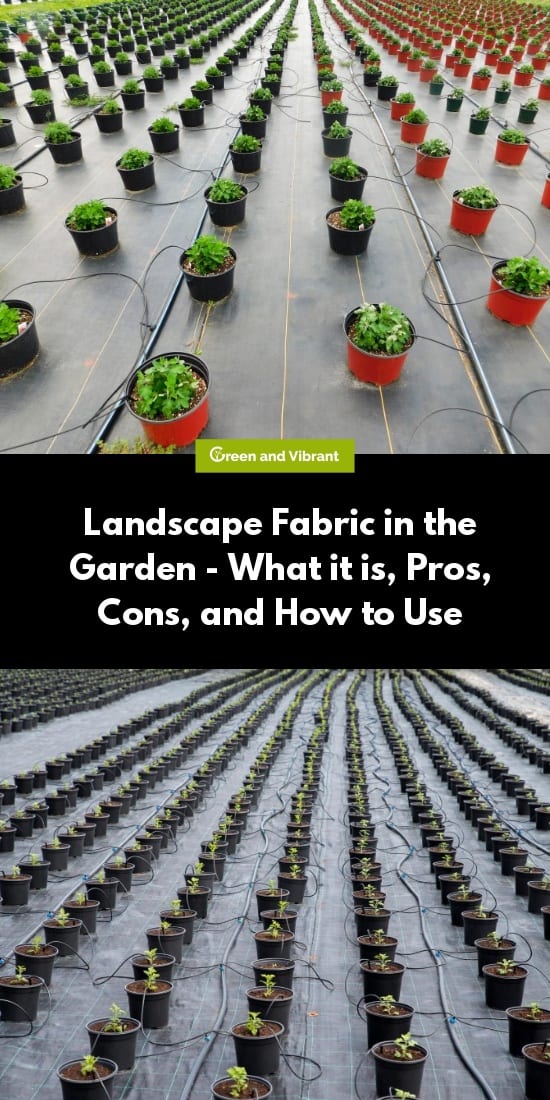
Related Content
-
Coconut Coir – What It Is, Varieties, and How to Use It
-
All about Spider Mites and How to Get Rid of Them
Home growers and gardeners tend to be quick to learn one of the most uncom... Read More
-
20 Cool & Thoughtful Gifts For Gardeners
window.adthrive.cmd.push(function() { window.adthrive.disableAds(); }); ... Read More
-
Top 15 Most Beautiful Flowers You Can Grow In Your Garden Immediately
"Flowers are the music of the ground. From earth's lips spoken without sou... Read More
